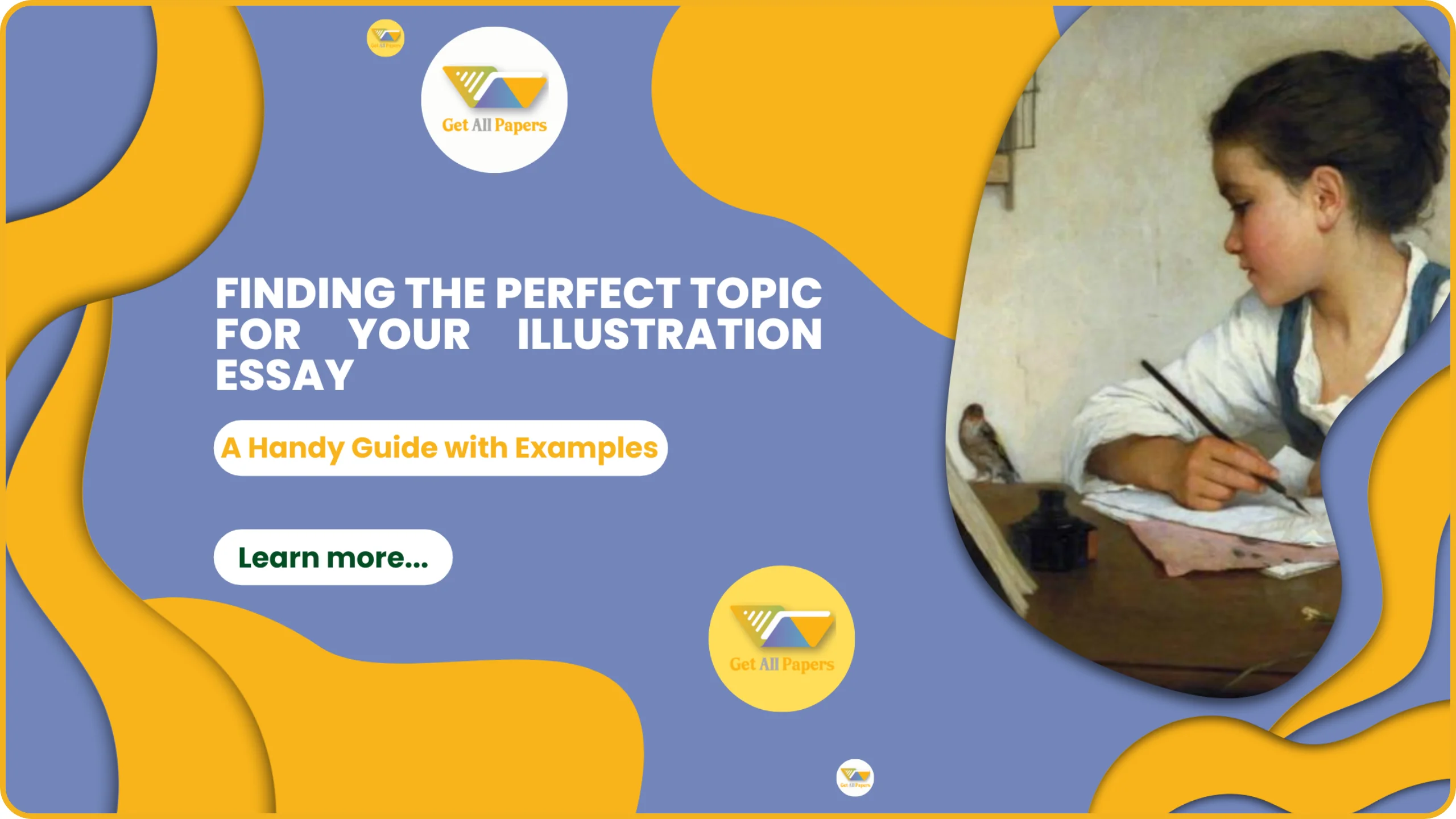
Finding the Perfect Topic for Your Illustration Essay
Written By: John T. Berg
Published On: Oct 4th,2023
Choosing the right topic for your essay is crucial, whether you are working on a narrative essay, academic essay, or any other type of written assignment. Your topic not only sets the tone for your entire paper but also determines the level of engagement and interest your readers will have. In this blog post, we will explore the process of finding the perfect topic for your illustration essay.
Understanding the Types of Essays
Before diving into the process of selecting a topic, it's essential to understand the various types of essays you might encounter. Each type has its unique purpose and structure, so knowing them can help you make an informed decision about your topic.
- Narrative Essay: This type of essay tells a story or recounts personal experiences.
- Descriptive Essay: Descriptive essays focus on describing a person, place, object, or event in detail.
- Informative Essay: Informative essays aim to educate readers about a particular topic without expressing personal opinions.
- Argumentative Essay: Argumentative essays present an argument and provide evidence to support a specific viewpoint.
- Persuasive Essay: Persuasive essays are similar to argumentative essays but emphasize convincing the reader to adopt the writer's perspective.
Now that you are familiar with different essay types, let's explore how to find the perfect topic for your illustration essay.
Step 1: Understand the Purpose of Your Essay
First and foremost, you need to clarify the purpose of your essay. Are you trying to persuade your readers, inform them, or simply describe a concept or phenomenon? Knowing your essay's purpose will help you narrow down your topic choices.
Step 2: Brainstorm Ideas
Once you've identified your essay's purpose, start brainstorming potential topics. Consider your interests, knowledge, and the assignment's guidelines. If you're struggling to generate ideas, here are some prompts to get you started:
- What are some real-life examples of the concept I want to illustrate?
- Are there any controversial topics related to my subject?
- Can I draw on personal experiences or anecdotes to support my points?
Step 3: Research and Gather Evidence
With a list of potential topics in hand, it's time to conduct some preliminary research. Look for credible sources and evidence that can support your points. This step is crucial, as your thesis statement should be based on the evidence you gather.
Step 4: Choose a Topic that Resonates
Now that you have a better understanding of your essay's purpose and have conducted some research, choose a topic that resonates with you. It should be something you are passionate about and can engage with on a personal level. This enthusiasm will come through in your writing and make your essay more compelling.
Step 5: Narrow Down Your Topic
Once you've selected a general topic, it's time to narrow it down. Specificity is key in essay writing. For example, if you chose "climate change" as your initial topic, you could narrow it down to "the impact of climate change on coastal communities." This focused approach will help you address your topic more effectively.
Step 6: Craft Your Thesis Statement
Your thesis statement is the heart of your essay. It should clearly state the main point you want to illustrate and provide a roadmap for your readers. Make sure your thesis is concise and specific.
Step 7: Check for Availability of Sources
Before finalizing your topic, check if there are enough credible sources available to support your thesis. Having access to reliable information is essential for a successful illustration essay.
Step 8: Seek Feedback
If you're unsure about your chosen topic, don't hesitate to seek feedback from peers, instructors, or even professional essay writers. Their input can help you refine your topic and make it more compelling.
Step 9: Consider Your Audience
Think about your target audience. Will they find your topic interesting and relevant? Tailoring your topic to your audience's interests can make your essay more engaging.
Step 10: Review Essay Format and Guidelines
Finally, before you start writing, review the specific essay format and guidelines provided by your instructor or institution. Ensure that your chosen topic aligns with these requirements.
Additional Resources for Essay Writing
If you're struggling with any aspect of your essay, whether it's finding the right topic or structuring your paper, there are resources available to assist you. Some students may consider using an essay typer or even looking for a free essay writer. However, it's important to use such tools responsibly and ethically. They can be helpful for generating ideas or getting started, but they should not replace the process of critical thinking and writing.
For those who need additional support, many institutions offer writing centers or tutoring services. These resources can provide personalized assistance and guidance throughout the essay-writing process.
In conclusion, finding the perfect topic for your illustration essay involves a thoughtful and systematic approach. Consider the purpose of your essay, brainstorm ideas, research your topic, and choose one that resonates with you. Remember to narrow down your topic, craft a clear thesis statement, and ensure there are sufficient sources available to support your argument. Seek feedback when needed, and always consider your audience and essay guidelines. By following these steps, you can set yourself up for success in your essay-writing journey.
In your pursuit of the perfect topic, keep in mind that the process itself is a valuable opportunity to develop your research and critical thinking skills. Embrace the challenge, and you'll not only find a great topic but also grow as a writer and thinker. Good luck with your illustration essay!
Related Posts







